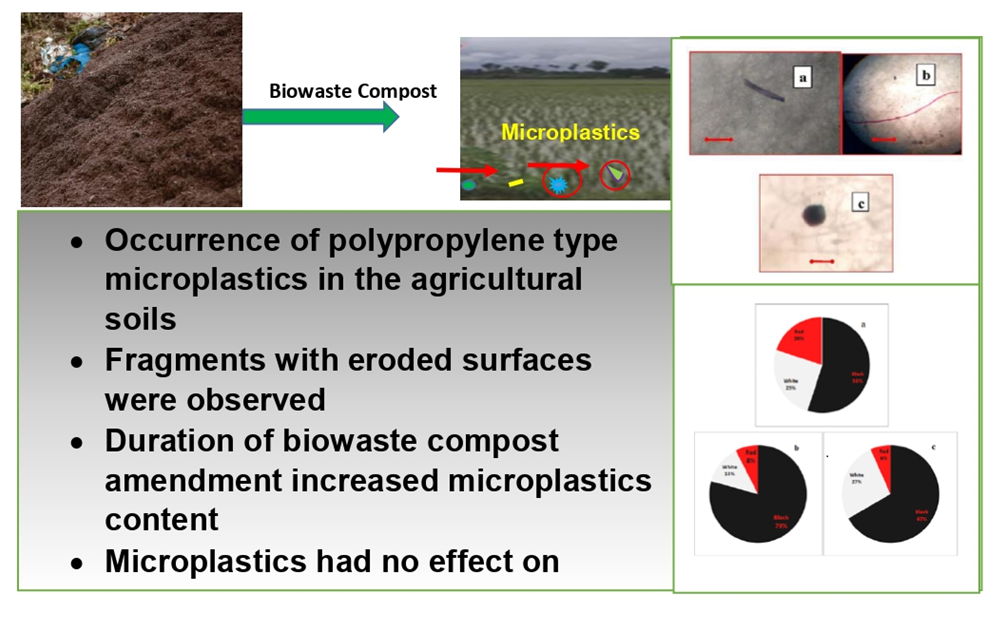
Microplastics were discovered in soil samples taken from fields in Tamil Nadu, India's Ponneri, Redhills, and Thirumazhisai where the fields had been amended with compost made from biowaste. The soil sample taken from agricultural field in Ponneri had the highest microplastic level, which was determined to be 3.28±0.8 g/kg. The duration of compost addition has a big impact on how microplastics are distributed. When compared to Redhills (5 years’ compost amendment) and Thirumazhisai (3 years’ compost amendment), the agricultural fields of Ponneri had greater microplastic concentration after 8 years of biowaste compost amendment. The Scanning Electron Microscope (SEM) analysis revealed the presence of multiple forms of microplastics in the study area, including fragments, fibres, and pellets. SEM research confirmed that the surface topography of microplastics exhibited cavities and cracks as a result of weathering activity. Fourier transform infrared (FTIR) spectroscopy analysis confirmed that polypropylene type microplastic was present in the study area. Additionally, the presence of microplastics in the biowaste compost had no impact on the bacterial population or microbial activity in the soil.
Total file downloads: 35